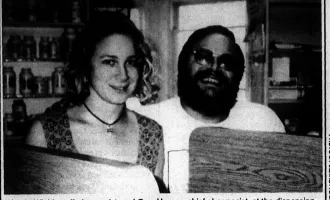Launch a Career in Scientific Storytelling
As scientists, we live in the nitty-gritty details and caveats of our work. To be effective scientific communicators, we must think beyond the details and incorporate compelling personal narratives and creative analogies while engaging with broad audiences.
Increasing numbers of PhD graduates are pursuing careers outside of academia, including careers in science communication.
Careers in science communication are not just limited to journalism and journal editing. They are broad, varied, and ever-changing as digital mediums are developed.
Science communication, regardless if it is the focus of your career, is a skill that all scientists should chose to actively practice and hone.
Two speakers recently gave seminars at UCSF about science communication, and here are some of their takeaways.
Why Stats Need Stories and Stories Need Stats
Dr. Dhruv Khullar is a resident physician at Massachusetts General Hospital in Boston, MA. During a visit organized by the Associated Students of the Graduate Division, Dr. Khullar spoke to UCSF students about the importance of including captivating narratives when communicating scientific information.
Dr. Khullar has been involved in science communication in a variety of mediums: he is a regular contributor to the New York Times, worked at the ABC News Medical Unit, and contributes to other academic and conventional publications. You can read one of his recent NYT articles, here.
He emphasized that, to a lay audience, numbers and percentages can seem abstract, but stories about people are what spark interest and can be the catalyst for change.
Using a target audience’s values can more effectively frame an issue and appeal to that audience.
Dr. Khullar stressed that now, more than ever, we as scientists need to speak out to protect the values we hold dear.
As facts, evidence-based decision making, and the validity and importance of scientific research are being called into question, we must be able to share with and convince others of the value of our work in an understandable way.
The seminar was followed with a workshop on writing a compelling op-ed piece.
Dr. Khullar listed five questions to consider when writing an op-ed:
1) What makes me uniquely qualified to speak on this issue?
2) Is your issue timely?
3) Are you effectively using facts?
4) Have you acknowledged that others might disagree with you? How can you assuage their doubts or misgivings?
5) Do you have a call-to-action or suggest tangible steps to change?
Connecting Art, Science and Business
Dr. Ruchir Shah is a scientific communications manager at Weber Shandwick, a global public relations firm, and was hosted on campus by the UCSF Science Policy Group.
Dr. Shah earned his PhD in Neuroscience from Yale before completing a postdoc at New York University. While doing his postdoc, he realized he no longer wanted to do bench science.
After becoming an editor for PLoS Biology, Dr. Shah began to produce podcasts in his free time. After PLoS, he was a freelancer before transitioning to Weber Shandwick.
At Weber Shandwick, he works with a global science communication team that works on campaigns for scientific and health-related companies and philanthropic organizations like the Bill and Melinda Gates Foundation, GlaxoSmithKline, and Genentech.
His team identifies a target audience, determines how that audience prefers to consume information, and turns complex, jargon-heavy science into understandable information for a broader audience. See an example of his work, here.
Are you interested in a career in science communication? If so, Dr. Shah recommends you start writing, producing, teaching, joining clubs, and making connections, all of which will help you refine your skills and find opportunities for engagement.

